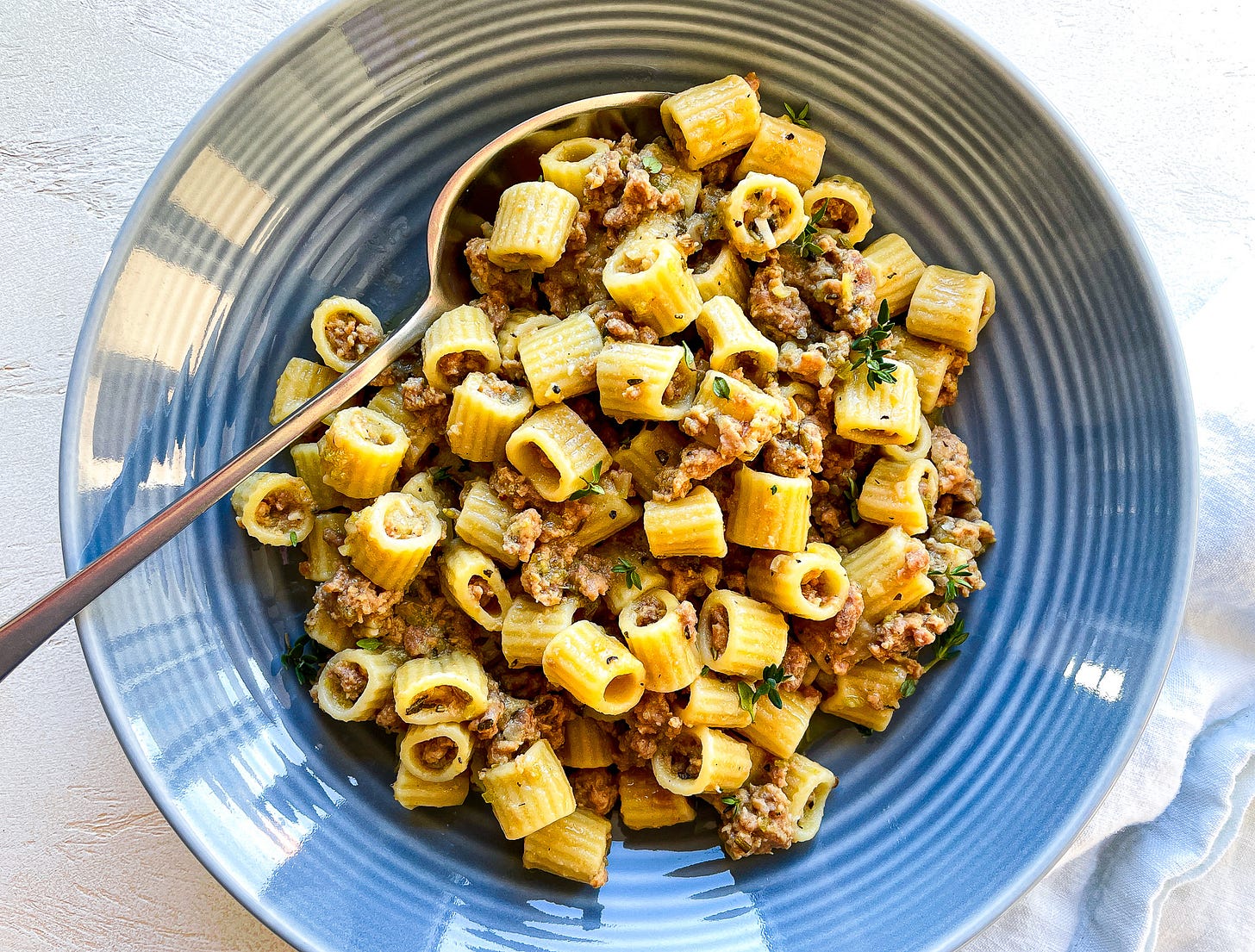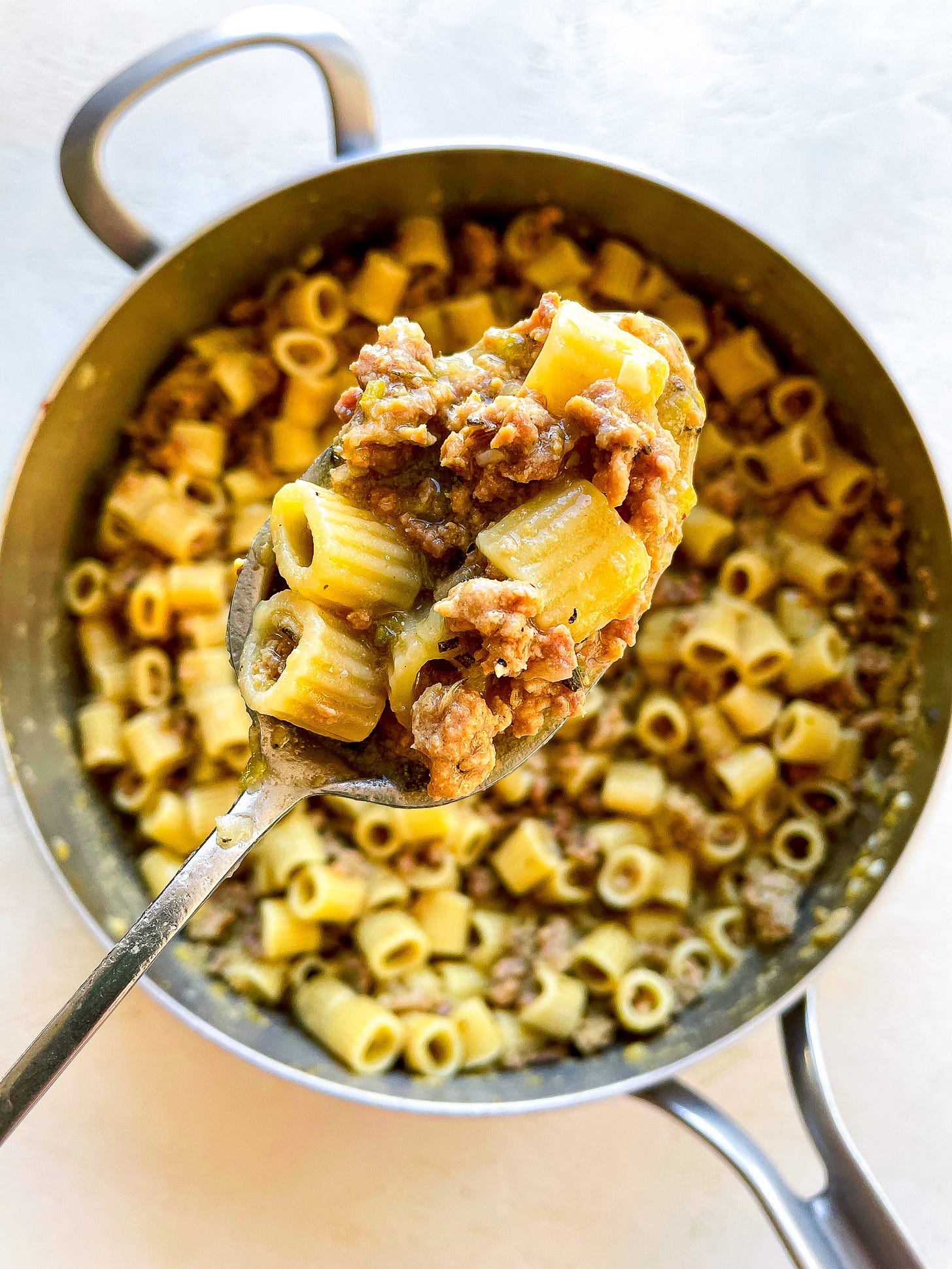Sometimes I get jealous of what other people eat. As a keeper of kosher dietary laws—pork and shellfish are the top two no-nos—I often wonder what it would be like to have the world’s culinary bounty at my fingertips, and, in that imaginary world, what I would devour first. A double bacon cheeseburger? Maybe. Lobster bisque? Probably. Tortellini in brodo? Definitely.
Make no mistake: Massimo Bottura himself could not convince me to eat a bowl of pork-stuffed tortellini in brodo, even if he invited me into his own home, shoved it in my face, and said please. I am proud of what I eat and just as proud of what I don’t, because every bite, three times a day, is a reminder of my Jewish heritage. But that doesn’t mean a girl can’t dream. And as a girl who’s great joy in life is food, those dreams can, sometimes, be distracting. When I was vegan, years ago, I didn’t glare at my friends eating thick wedges of cheese with disapproval and distaste; no, I glared at them with envy. In culinary school, I cooked filet mignon and cassoulet and cioppino with just as much fervor as when I watched my peers eat them all without me. Even if I’m choosing not to eat something, that doesn’t mean I don’t understand how delicious it might be. Not to mention the fact that I didn’t always choose not to eat those things, so I know what filet mignon and cassoulet and cioppino taste like from my youth. Sometimes it makes me dwell on that perennial dilemma: Is it better to have loved and lost, or to never have loved all?
I have learned, over the years and particularly in the process of writing my cookbook, to reframe my dietary restrictions as parameters, not to be seen as needing to create without but rather within. This mindset suits me, since I always work better in a box. Give me every ingredient and tool in the world, and I’ll be swallowed by choice; give me a list of five things and I’ll make them count. Today’s recipe is a product of that box, and boy did I make it count. This, I’d wager, is one of my best.
Red ragùs, deep and dark and sultry, are America’s favorite meat sauces. In Italy, too, they’re pinnacles of flavor, from ground beef and pork in Bologna (of course), to wild boar in Tuscany, oxtail in Rome, duck in Venice, and lamb in Sardinia. The term itself comes from the French ragoût, referring to stews of meat and vegetables cooked low and slow, both peasant food and royal fare depending on the types of meat and aromatics used. In France, like in Italy, tomatoes are a relatively modern addition to the culinary cannon, brought over from the Americas in the 15th or 16th century. The concept of a ragù made its way to Italy during the Napoleonic era, though Italians had long since been making similar meat stews, even if they lacked tomatoes and pasta. So although today it might seem odd to consider a meat sauce without tomatoes, it’s actually just as traditional (older, even), with just as many variations. These sauces, some also inspired by the French and particularly their béchamel, are called ragù bianco, or “white ragù.”
Where red ragùs are hot-tempered and passionate, white ragùs are soft and subtle. They’re typically made with pork or veal or boar or rabbit, and so they’ve long been stuck on my Do Not Eat list. Although pork is most common, I should have known there would be versions made with beef and chicken and lamb, too, all part of my Yes, Please Eat list. Regardless of the meat you choose, white ragùs are constructed similarly to their more-popular cousins: with vegetables, wine, and stock. Some also include mushrooms; in Naples, if you’re lucky, you might find a very old dish called la Genovese ragù, rich with pull-apart braised beef and lots of onions cooked for a very long time.
If I had written this three months ago, perhaps I would have asked you to splurge on some large, bone-in cut of meat and dedicate your weekend to your Dutch oven. But now we’re working with different parameters, in a different box: longer days, warmer air, lighter fare. So instead I’ve created a white ragù that not only embraces my personal dietary parameters, opting of ground turkey and beef over pork, but also one that’s relatively quick. A shorter cook time doesn’t mean we’re sacrificing on depth or flavor, either, thanks to a roster of carefully chosen spices, herbs, and other aromatics. The result is, I dare say, astounding—delicious and satisfying and complex beyond all expectation, and even better for being within reach on a weeknight.
Weeknight White Ragù
Serves 4






